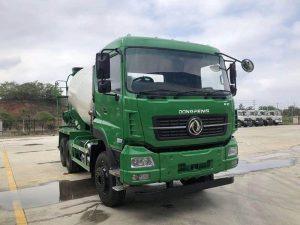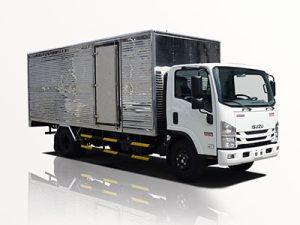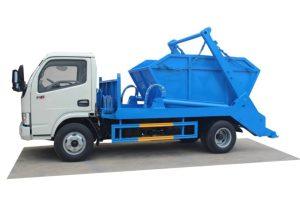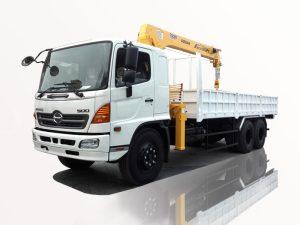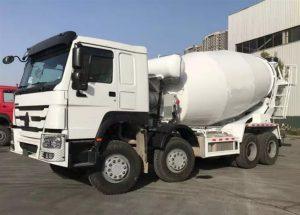Monday to Saturday - 8:00 -17:30
What is a Retarder on a Semi?
Driving a semi-truck is a unique experience, especially when it comes to managing speed and control on various terrains. One of the essential components that assist drivers is the retarder. Understanding what a retarder is and how it operates can significantly enhance the safety and efficiency of any trucking operation. In this article, we will delve into the details of retarders, how they function, the different types available, and their practical benefits.
Introduction to Retarders
A retarder is a crucial component in heavy vehicles, particularly semi-trucks, designed to aid in slowing down the vehicle without using traditional braking systems like the hydraulic or air brakes. With the added weight of a loaded semi, managing speed on descents is critical for safe operation. Retarders provide additional braking power and reduce wear on brake components. They are mainly used during long downhill runs or when a truck is heavily loaded.
Types of Retarders
1. Engine Brakes
Engine brakes, often referred to as Jake brakes, are one of the most common types of retarders. They work by altering the engine’s valve timing to create a braking effect. When engaged, they use the engine’s own energy to slow the vehicle instead of relying solely on the conventional brake system.
2. Exhaust Brakes
Exhaust brakes utilize engine exhaust pressure to create resistance. By closing an exhaust valve, they increase back pressure, which slows the engine and helps in decelerating the vehicle without considerable wear to traditional brakes.
3. Hydrodynamic Retarders
Hydrodynamic retarders use a fluid coupling system to generate a braking effect. As the vehicle moves, fluid circulates within the retarder, creating resistance and slowing down the truck. They are efficient in controlling speed, especially during long downhill runs.
4. Electric Retarders
Electric retarders are becoming increasingly popular, especially in modern electric and hybrid trucks. They use electrical energy to create magnetic resistance, thereby slowing the vehicle without mechanical wear.
How Does a Retarder Work?
A retarder operates by providing additional braking force using an alternative method other than the primary brake system. Each type operates based on different principles but aims for the same result – safe deceleration.
| Type of Retarder | Mechanism | Advantages |
|---|---|---|
| Engine Brakes | Changes valve timing to create engine braking | Reduces brake wear, effective on steep hills |
| Exhaust Brakes | Increases exhaust back pressure | Less wear on brake pads, ideal for heavy loads |
| Hydrodynamic Retarders | Uses fluid resistance to slow down | High efficiency, minimal heat generation |
| Electric Retarders | Uses magnetic resistance to slow down | Low maintenance, eco-friendly option |
Benefits of Using a Retarder
Improved Safety
Retarders enhance safety by providing additional braking power, especially when descending steep hills or carrying heavy loads. They reduce the risk of brake fade, which can occur with excessive use of traditional brakes.
Reduced Brake Wear
By utilizing a retarder, truck operators can significantly minimize the wear and tear on their brake components. This leads to lower maintenance costs and longer service intervals for braking systems.
Enhanced Control
Using a retarder allows for better speed control, particularly when navigating challenging terrains. Drivers can maintain a steady pace without over-relying on their foot brakes.
Fuel Efficiency
In some cases, using retarders can contribute to improved fuel efficiency. By reducing reliance on traditional braking systems, less energy is expended, which can lead to better fuel consumption under certain conditions.
Practical Examples of Retarders in Action
Mountain Driving
Consider a truck driver navigating through mountainous terrain. In such scenarios, the use of an engine brake can significantly assist in managing speed without overheating the brake pads. For instance, a driver descending a steep incline will engage the Jake brake to reduce speed and avoid brake failure.
Heavy Load Conditions
When a semi-truck is fully loaded, it is essential to control the descent effectively. Utilizing an exhaust brake can help keep the vehicle at a manageable speed, ensuring that the driver can respond to sudden stops or turns without compromising safety.
Long Distance Transport
During a long-distance transport where the driver may face various terrain changes, switching between retarders can provide consistent braking support, especially in areas with prolonged downhill grades.
Tips for Using Retarders Effectively
1. Understand Your Retarder
Each vehicle may have a specific type of retarder, and understanding its operation is key. Read the manual and familiarize yourself with its functionalities.
2. Combine Retarders with Traditional Brakes
Using retarders in conjunction with traditional brakes is often the most effective way to manage speed. This combination can help prevent overheating and extend the life of your brake system.
3. Monitor Road Conditions
Weather and road conditions can impact how effectively a retarder operates. Be mindful of wet or icy conditions where braking performance may differ.
4. Practice Using the Retarder
Take time to practice using the retarder in a controlled environment. Becoming familiar with how it affects your vehicle’s speed can greatly improve your driving confidence.
Regulatory Considerations
Understanding Regulations
It’s important to stay informed about the regulations regarding the use of retarders in your region. Different states or countries may have specific rules governing their implementation, particularly concerning noise levels and usage in certain areas.
Compliance with these regulations is essential to avoid penalties and ensure safety. Always check local guidelines and follow the manufacturer’s recommendations.
FAQ Section
What is the primary function of a retarder on a semi?
The primary function of a retarder on a semi is to provide additional braking power to slow down the vehicle, particularly on long downhill grades, without relying solely on mechanical brakes.
Can using a retarder extend the life of brake components?
Yes, using a retarder can extend the life of brake components by reducing their workload and minimizing wear and tear on pads and discs.
Are retarders allowed everywhere?
Regulations regarding the use of retarders vary by location. Some areas may have restrictions due to noise or safety concerns, so it’s important to check local laws before using a retarder.
How do I know which type of retarder is best for my truck?
The best type of retarder for your truck depends on your specific driving conditions, load capacity, and personal preference. Consult with a professional or refer to your truck’s manual for recommendations.
Is it safe to rely solely on a retarder?
While retarders provide significant braking assistance, they should not be the only source of braking power. It is best to use them in conjunction with traditional braking systems for optimal safety in all driving conditions.
Can the use of retarders improve fuel efficiency?
In some situations, using retarders can help improve fuel efficiency by minimizing brake component usage and reducing energy loss during braking. However, this effect may vary based on driving conditions.



